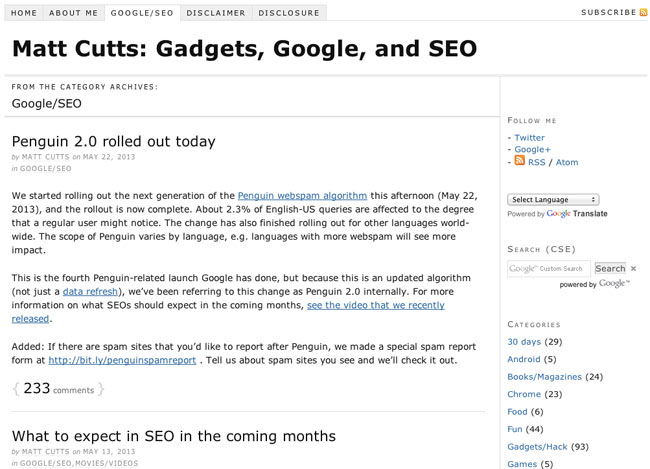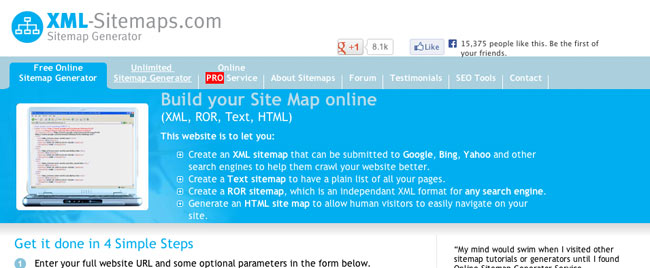
1. Essential Sources You Should Read Before Getting Started
In every new business or activity you need to have if not that solid than at least some knowledge base. It will help you not to get lost in numerous information flows on the Net and will prevent you from indulging into apparently stupid techniques.
- Google SEO Starter Guide
- The beginner’s guide to SEO by SEOMoz
- The blog by Matt Cutts. Not about SEO exactly but if you are primarily focused on Google SEO you should read it carefully to know what you are dealing with

2. A Bit of On-page SEO
Though the list is primarily focused on off-page SEO you should never forget about the product itself which is your website. Before commencing promotional activities for your website first make sure that what you are promoting is in good shape.
- XML-sitemaps - offers a free online sitemap generator
- Checks the speed of page’s download - https://developers.google.com/speed/pagespeed/insights
- Checks the validity of Web documents - http://validator.w3.org
- Analyzes to what extent your website is search engine friendly - http://www.seositecheckup.com

3. Check What Your Competitors Are Up to (Backlink Checking Tools)
Every SEO professional should act just as any marketer acts when he starts the promotion of his product. It’s essential to understand your market niche, your major competitors and their strong and weak points. You should also learn as much as possible about their strategy and tactics. Here backlink checking tools are irreplaceable. Checking up your competitors’ backlink profile will give you a comprehensive understanding of where your competitors are and where they are moving to. After that you can proceed to establishing your own plan.
- Moonsearch is a free backlink checker, performs competitive website research, domain information lookup, shows the structure of a website
- Backlinkwatch provides backlink checking and analysis including anchor text, pagerank, restriction of nofollow tag
- Open Site Explorer - in addition to analyzing backlinks of a single website, makes it possible to compare up to 5 websites by Page Specific, Subdomain, Root Domain metrics
- Ranksignals discovers SEO links and traffic sources of your competitors
4. Domain Stats Tool
You may need website domain stats in many cases starting from a pure desire to get a website’s deeper background (where its server is situated, IP address) to the cases when a website doesn’t provide any contact email on its page and you need to contact the webmaster.
- Whois.DomainTools - offers a basic WHOIS lookup service as well as historical information including IP address (website hosting), name server, registrar and screenshot history
- Spyonweb - in addition to domain name, IP address, page rank and Alexa rank shows website’s Google Analytics ID and DNS servers
5. Keyword Choosing and Analysis Tools
Proper choice of keywords is a crucial point in a comprehensive SEO strategy. Finely chosen keywords enable people who are looking for something your website provides to find it there. You should remember about and use your keywords every time you prepare a piece of content for your website, an article which mentions your service or a post for your blog.
- Google Adwords Keyword Tool helps to find keyword ideas, estimate traffic for existing and new keywords and identify irrelevant terms to use as negative keywords
- Keyworddiscovery collects keyword data from many different search engines world wide and compiles a range of search related statistics
- Live-Keyword-Analysis performs keyword density analysis of a text
- Google Trends show how often specific keywords or phrases have been searched for during a specific period of time
6. Content Helpers
Now the most interesting and important part comes - writing a high quality, engaging and unique piece of content. Writing an article or a blog post for the Internet can be difficult even for brilliant word-painters. While writing content for the Net you should be focused not only on beloved dear readers but on search engines as well. And that’s not an easy thing to do as people are mostly emotional while machines are solely rational. Striking a delicate balance between perfect readability and search engine friendliness is a great challenge for every content writer.
- Plagiarism checker shows the percentage of unique content in a piece of text. As for existing content it shows the date when it appeared on the web
- PlagSpotter duplicate content checker detects duplicate content and shows websites where the content already exists
- JuicyStudio tests website’s readability
- Inboundwriter helps to write nice pieces of content
7. Analytics
Analytics is highly essential both in terms of auditing a website (where it gets most of its traffic from, where most of its visitors come from, how the number of visits was changing during a certain period of time) and assessing your SEO activity (what links brought most of the visits, how deep users get through your website, how long they stay there, etc). Analytics is there to help you measure your results and prompt you in which direction to move.
- Google Analytics provides extensive data on website's traffic and traffic sources and assesses conversions and sales
- Yahoo reporting tool delivers a highly customizable, enterprise-level website analytics
8. SEO Analysis
While analytics is only applicable to the website you own, SEO analysis tools come in useful when you want to review other websites - those belonging to your competitors, for example.
- Semrush performs a vast competitor research, shows organic and Ads keywords for any site or domain
- In addition to the extensive analysis of a website, Woorank points out its strong and weak points and gives recommendations as for necessary changes one should make to improve the website.
9. Social Media Presence Analysis
Relationships between people, social connection patterns and thus, the ways people share information now have moved towards virtual. You should regularly monitor communication flows containing your website’s mentions on social platforms. Your website should definitely go social itself - just choose a platform that suits you the most and go ahead!
- Sharedcount analyzes website’s presence in Facebook, Twitter, Google+, Pinterest, LinkedIn, Delicious, StumbleUpon
- Followerwonk helps to explore and grow your social graph with a deep insight into Twitter analytics
10. Going Mobile
The last but not least is the way your website looks and functions on mobile devices. Actually it’s not that much about going mobile anymore - it’s about being mobile. The number of mobile Internet users continues to grow, so now many users may not even know how your website looks on a PC screen as the only way they have always interacted with it is through their smartphone or tablet.
- HowToGoMo is a Google tool which displays the way a website looks on a mobile device
- With MobilePhoneEmulator you can test the display of your website in a cell phone terminal. You just need to enter a real size of the screen of a device and then you can enjoy the look
Conclusion
This list is not a result of one nothing-to-do evening; rather, it has been created naturally and stems from my own practice in the field. The order is not random either, its items go smoothly from theoretical basis to technical points, from content creation to the analysis of the work you’ve done. SEO is not an easy on-the-fly job. It is a multi-stage thought-over roadmap which you need to follow to be effective and productive. That’s why “SEO strategy” word combination is more common on the net than “SEO tactics”. Just as every decent strategy needs good implementation so do you need a toolkit for making your plans a reality. Keep this one, add your own stuff you stumble upon on the net and be diligent. May it sound boring, but it will surely bring you to success.